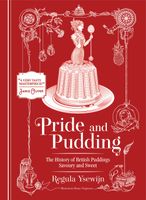Advertisement
Ice Cream for Everyone
Published 2016
In the early twentieth century, ice-cream making experienced a decline because of wartime shortages of milk and sugar. The production and selling of ice cream was banned by the Ministry of Food in 1917 but, as soon as the war was over, the ice-cream trade came back as strong as it was before. In 1922, T. Walls and Sons Ltd became the first nationwide ice-cream wholesaler. They had tricycle ice-cream carts driving around London with the words ‘Stop me and buy one’ painted onto the front; by 1939 their numbers would be 8500 nationwide. Lyons Ices followed with their ice-cream parlours and others followed suit. After the Second World War and into the 1960s ices and ice lollies (iceblocks/popsicles) were factory-made on a large scale and had become an important part of a good night out at the cinema. Soon the American-style soft ices such as the still-popular ‘Mr

